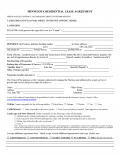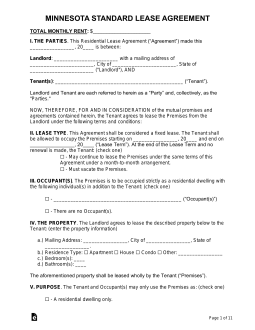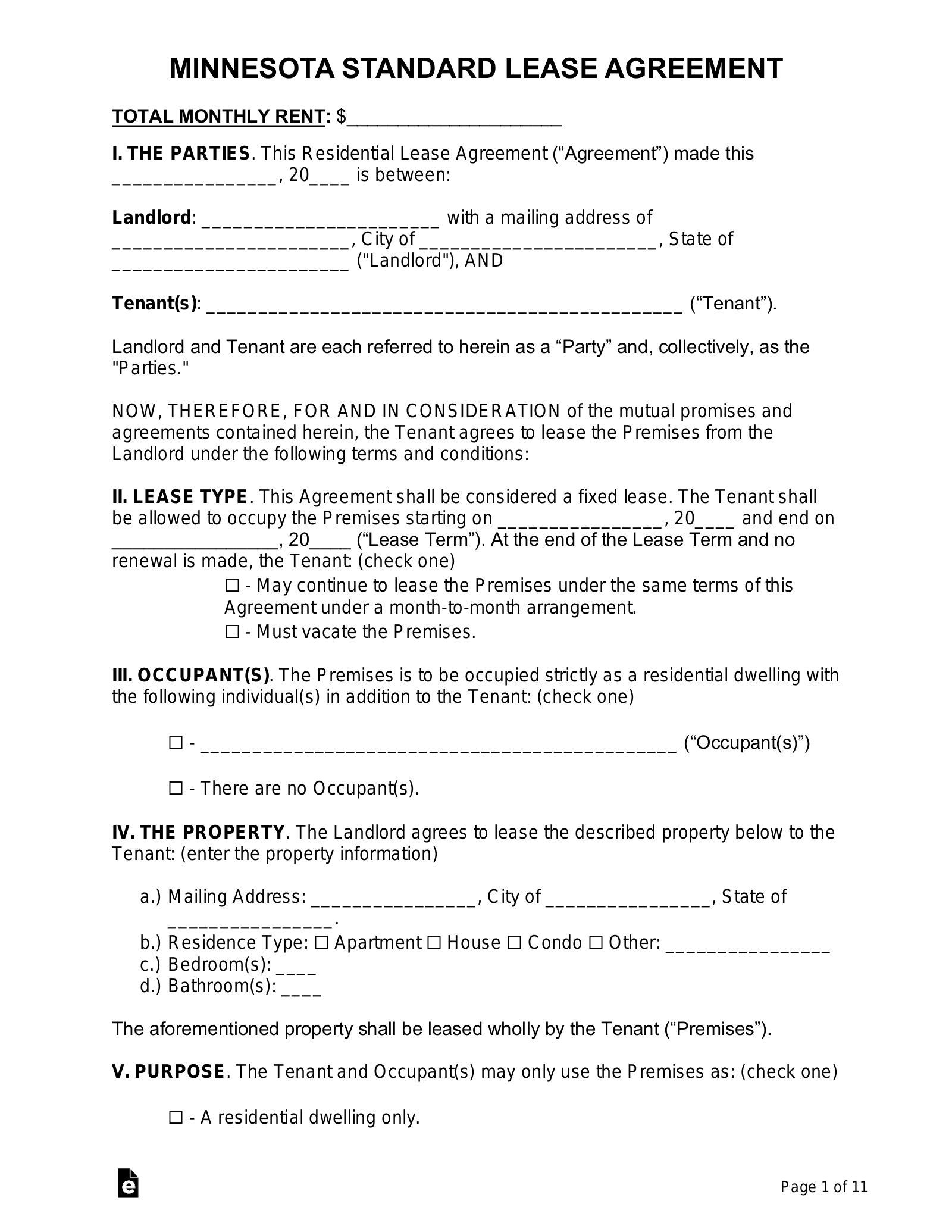Updated January 18, 2024
A Minnesota standard residential lease agreement is a rental contract that creates a binding tenancy arrangement between a landlord and tenant. A prospective tenant will commonly be shown the premises before renting by the landlord or their agent. If interested, the tenant will complete a rental application and request to be approved by the landlord. If so, the landlord will accept the tenant and write a lease with the negotiated terms. After signing, the tenant will be responsible to pay the first (1st) month’s rent and the security deposit.
Laws – Chapter 504B (Landlord and Tenant)
Handbook – Landlords and Tenants: Rights and Responsibilities (PDF)
Other Versions (2)
 Minnesota STATE BAR Association
Minnesota STATE BAR Association
Download: PDF
 Minnesota Standard Residential Lease Agreement Versions 2
Minnesota Standard Residential Lease Agreement Versions 2
Download: PDF


